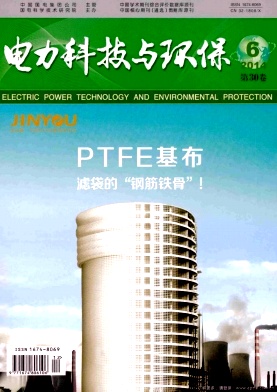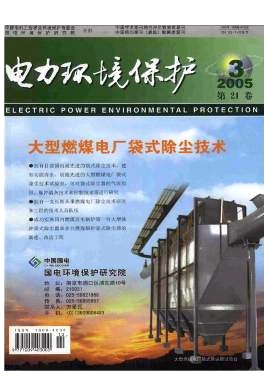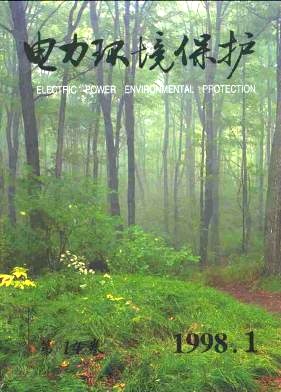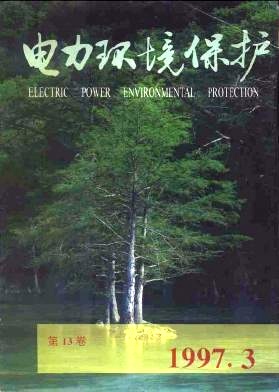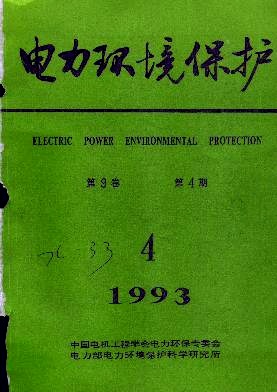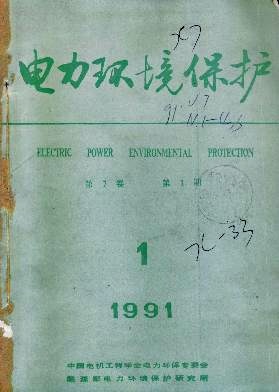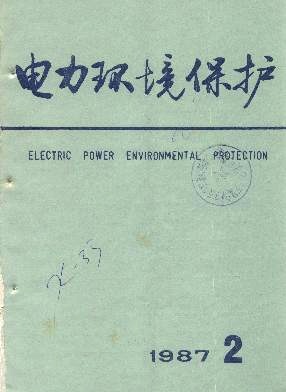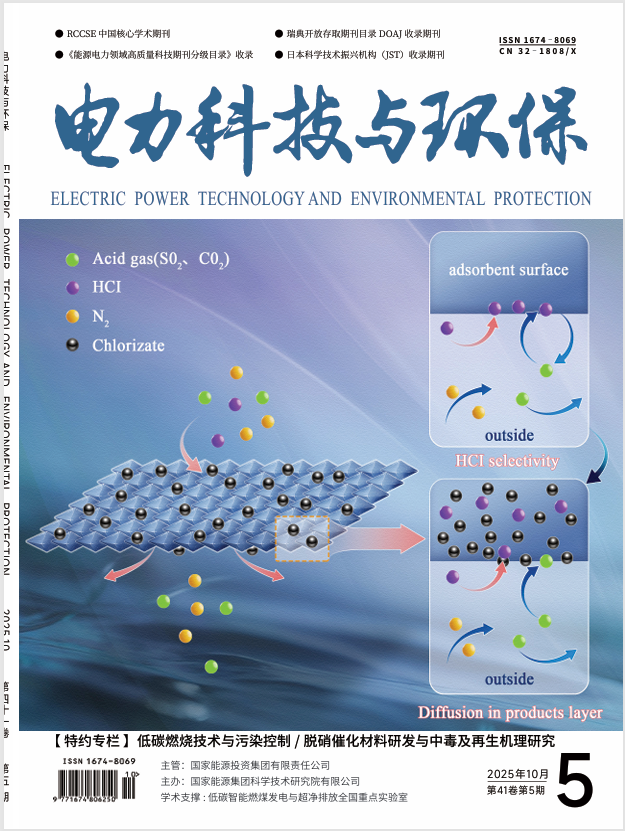
Tracking the information about your manuscript
Communicate with the editorial office
Query manuscript payment status Edit officeCollecting, editing, reviewing and other affairs offices
Managing manuscripts
Managing author information and external review Expert Information Expert officeOnline Review
Online Communication with the Editorial Department
Download Center
Page Views
Page visits today: 40
Study on synergistic regulation of Mo/Ce_xZr1-xO2 catalysts and their lowtemperature NH_3-SCR activity and poisoning resistance
ZHAO Yonggang;CAI Yandi;DU Shunxin;TANG Tianfa;YAO Leiyang;YUAN Xianqiang;[Objective] In order to develop an efficient and environmentally friendly low-temperature denitration catalyst and solve the problem that the flue gas temperature cannot meet the optimal reaction temperature of SCR denitration catalyst during low-load operation of coal-fired power plants, the low-temperature activity and anti-poisoning performance of NH3 selective catalytic reduction(NH_3-SCR) reaction were improved. [Methods] Mo-modified Ce-Zr solid solution(Ce_xZr1-xO2) catalysts(Mo/Ce_xZr1-xO2) were designed and prepared via the coprecipitation method and wet impregnation method. Characterization techniques such as XRD, H_2-TPR, and NH_3-TPD were used to analyze the structure, redox capacity, and acid site distribution of the catalysts. [Results] The results show that the formation of a cubic fluorite-structured solid solution by Ce and Zr significantly enhances the redox capacity and specific surface area of the catalyst, while the introduction of MoO3 provides key acid sites that synergistically promote NH3 adsorption and activation. Among them, the Mo/Ce0.5Zr0.5O2(Mo/C5Z5) catalyst exhibits optimal performance: NO conversion > 90% in the temperature range of 200~350 ℃, high N2 selectivity, and maintains over 80% activity at 250 ℃ under harsh conditions containing 200 μL/L SO2 and 5% H_2O. Its sulfur and water resistance is significantly superior to traditional vanadium-based catalysts. [Conclusion] This study provides a new strategy for the development of efficient and environmentally friendly low-temperature denitration catalysts, and provides a new idea for solving the problem of mismatch between the optimal activity of denitration catalysts and reaction temperature under low-load operation conditions of coal-fired power plants. In the future, it is necessary to further optimize performance and long-term stability to adapt to complex flue gas environments.
Research on the influence mechanism of precipitation agent dosage on the deNOx performance of MnOx catalyst
FENG Shuo;LIU Huanhuan;LYU Xuan;YUAN Peng;WANG Yunfei;SONG Rui;YANG Liu;LI Xinqiang;[Objective] The NOx emissions from solid fuel combustion in coal-fired power plants can cause serious harm to the environment. Therefore, strict control of NO emissions in flue gas is beneficial for reducing the pollution of coalfired power plants to the atmospheric environment, thereby improving air quality. At present, Ammonia Selective Catalytic Reduction(NH_3-SCR) is the most widely used method for achieving flue gas denitrification, and the core of this technology is the design of efficient catalysts. In order to improve the denitrification efficiency of MnOx catalyst, it is necessary to study the effect of precipitant dosage on its activity. [Methods] In this study, MnOx catalysts with different amounts of precipitants were prepared using co precipitation method. And through a series of characterization testing methods, a comparative analysis was conducted on catalysts with different amounts of precipitants to explore the mechanism of the influence of precipitant dosage on catalyst activity.[Results] The results showed that the 0.1 AH-MnOx catalyst prepared with 0.1 mol ammonia water as the precipitant exhibited the best catalytic activity, with a NO conversion rate of over 95% in the range of 200-300 ℃. Through characterization results such as scanning electron microscopy and N2 adsorption desorption testing, it was found that excessive use of precipitant exacerbated the agglomeration phenomenon of the catalyst, promoted the increase of the catalyst particle structure, and reduced the specific surface area, average pore size, and pore volume of the catalyst. In addition, NH_3-TPD test results showed that as the amount of precipitant increased, the surface acidity of the catalyst also decreased. This is related to the decrease in the specific surface area of the catalyst, which leads to a reduction in the active sites on the catalyst surface, which is not conducive to the adsorption and activation of NH3, ultimately resulting in a decrease in the reaction activity of the catalyst. The denitrification performance of 0.1 AH MnOx catalyst is slightly better than that of 0.2 AH MnOx catalyst. However, due to the low amount of precipitant used in the 0.1 AH-MnOx catalyst, the catalyst yield is low, resulting in increased production costs. And the morphology, specific surface area, and surface acidity differences between 0.2 AHMnOx and 0.1 AH-MnOx catalysts are minimal, while the 0.2 AH-MnOx catalyst has a higher yield.[Conclusion] Therefore, when preparing catalysts by precipitation method, it is not only necessary to optimize the type of precipitant, but also to pay attention to comprehensive considerations from the aspects of precipitant dosage and cost, in order to achieve the optimal effect.
The effect of heat treatment in different atmospheres on the regeneration activity of SO_2-poisoned WO3/CeO2 catalysts
ZHAO Wenrui;LI Peixiao;JIANG Peiting;MA Kaili;LI Lulu;[Objective] Ammonia selective catalytic reduction(SCR) is considered to be one of the best technologies for controlling the emission of NOx, the main component of power plant tail gas, in which the catalyst is the core of the technology. The loaded tungsten-cerium catalyst is a non-vanadium based SCR catalyst with excellent denitrification activity in the medium to high temperature range, and it is of great significance to carry out an in-depth study on the regeneration mechanism of its SO2 poisoning deactivation in order to maintain the long-term and efficient denitrification activity of this catalyst. [Methods] In this study, the SO_2-poisoned WO3/CeO2(W/Ce-S) catalyst was heat-treated at 400 ℃ with different atmospheres(N2, Air-N_2+O2, NH3) to investigate the deactivation and regeneration mechanism of SO_2-poisoned WO3/CeO2 catalyst. With the help of characterisation tools such as X-ray diffraction, Raman spectroscopy, X-ray photoelectron spectroscopy, Fourier infrared spectroscopy, thermogravimetric analysis, and hydrogenprogrammed warming reduction, the reasons for the different regeneration effects were explored. [Results] It was found that the denitrification activity of SO_2-poisoned WO3/CeO2 catalysts could be restored to different degrees after heat treatment with different atmospheres. Among them, the W/Ce-S activity recovered to 97.4% of the pre-poisoning level after NH3 heat treatment. With the help of various characterisation means, it was found that this was mainly due to the fact that the ammonium sulphate and metal sulphate species deposited on the surface of the W/Ce-S catalysts were decomposed to the maximum extent after the NH3 heat treatment, which restored the surface active sites and redox capacity, and promoted the regeneration of its catalytic activity. [Conclusion] The results of the study are conducive to the reduction of denitrification costs in the power industry and provide a theoretical basis for the design of environmentally friendly sulfur-resistant catalysts.
Research on three-phase grid-connected system of PV-storage dynamic analysis and multi-objective coordinated control of virtual synchronous photovoltaic storage grid connected system via NSGA
WEI Zhen;REN Jie;LI Yijia;WANG Zhiqing;MENG Jinghui;State grid Shandong electric power company Qingdao power supply company;[Objective] With the transformation of the global energy structure and the wide application of renewable energy, photovoltaic power generation system has become one of the important energy sources because of its clean and renewable characteristics. However, the fluctuation of output power from photovoltaic power generation systems poses a challenge to the stability of the power grid. In order to solve the problem of power grid stability caused by the output power fluctuation of photovoltaic power generation system. [Methods] In this paper, an optimization method of optical storage three-phase grid-connected system based on intelligent algorithm optimization and virtual synchronous generator( VSG) technology is proposed. Through in-depth analysis of VSG control principle and the influence of energy storage system control parameters( proportional gain Kp and integral gain Ki) on system voltage, current and frequency, this study constructs the overall model of the three-phase grid-connected system, and uses nondominated sorting genetic algorithm-Ⅱ( NSGA-Ⅱ) to optimize the DC voltage variance and AC frequency variance. The optimization results are comprehensively evaluated by the technique for order preference by similarity to an ideal solution( TOPSIS) method. By comparing with the traditional PI control, the effectiveness of the optimized parameter configuration is verified. [Results] The performance of the VSG control system optimized by TOPSIS in terms of stable frequency and voltage deviation is 50 Hz and-0.064%, respectively, which is significantly better than 50.2 Hz and 0.354% of PI control. The system based on VSG control also performs well in terms of voltage distortion rate and negative sequence voltage imbalance. The voltage sine wave distortion rate is only 0.12%, which is much lower than 3.78% of PI control, and the negative sequence voltage imbalance is 0.002%, which is significantly lower than 0.023% of PI control. The quality of gridconnected voltage is significantly improved, which proves the effectiveness of NSGA-Ⅱ optimized VSG control model in improving system stability and power quality. [Conclusion] This study provides new insights and methodologies for the optimal design of PV energy storage grid-connected systems, offering robust support for the development of renewable energy grid integration technology and facilitating the evolution of future energy management systems towards greater efficiency and reliability.
Arsenic poisoning in V2O5/TiO2 SCR catalyst and its countermeasures
XIAO Yuting;LU Jinfeng[Objective]To investigate the accumulation pattern and poisoning mechanism of arsenic on vanadium titanium denitrification catalysts, and to propose effective measures to deal with arsenic poisoning. [Methods] A 600 MW unit denitrification system combusting high-arsenic coal was selected to compare the operation data of imported and domestic catalysts. The arsenic accumulation pattern was analysed by X-ray fluorescence spectrometry. Regeneration experiments of the poisoned catalysts were carried out by using Ca(NO3 )2 and H2 O2 solutions to assess the effect of activity restoration. The improvement scheme was proposed from the aspects of coal blending, catalyst formulation optimization, and operation strategy. [Results] The study showed that arsenic was most significantly enriched at the inlet end of the catalyst, and the accumulation pattern was as follows: the first layer > the second layer > the bottom. The arsenic saturation rate was the fastest within 8 000 h of operation, and the arsenic accumulated on the catalyst was close to saturation, and then the accumulation rate gradually slowed down. The accumulation rate of arsenic of imported catalysts was higher than that of domestic ones within the 8 000 h of the most serious deactivation. The regeneration effect of H2 O2 was better than that of Ca(NO3 )2 , but the strong polar solvent led to the loss of 26% of the active component V2 O5 . The blending of high-organic-mass or high-CaO coal could inhibit the volatilisation of As2 O3 by 50%. Catalyst formulations that increase the distribution of the pore sizes and increase the molar ratio of (V+W)/As could enhance the arsenic tolerance Layered addition of catalysts reduces the purchase cost by 5% compared to conventional designs. [Conclusion]Arsenic poisoning can be dealt with through coal blending to inhibit the pollution source, optimising the catalyst microporous structure and active components, and implementing the ‘short-cycle, layer-by-layer updating’ operation strategy, which provides a cost-effective and efficient solution for the denitrification system of high arsenic coal power plants.
Study on the migration and transformation of arsenic, selenium, and chromium during coal combustion
LIANG Xin;MA Jingxuan;ZHAO Shinlin[Objective] The toxic trace elements emitted from coal combustion have posed huge threats to the environment and human health. Clarifying the migration and transformation characteristics of trace elements during coal combustion is of great significance for their effective removal and clean emissions of coal-fired flue gas. [Methods] This work takes a coal sample from a 660 MW coal-fired power plant as the object, and uses tube furnace combustion experiments and chemical thermodynamic simulation to investigate the effects of temperature and atmosphere on the migration and transformation of toxic trace elements arsenic (As), selenium (Se), and chromium (Cr) during the coal combustion process.[Results] Under different combustion conditions, As and Se are primarily distributed in fly ash, while Cr is predominantly in bottom ash. An increase in temperature under an air atmosphere facilitates the migration of As from bottom ash to fly ash, while an oxygen-enriched atmosphere promotes the migration of As into the flue gas. At 700 ℃ or 900 ℃, an increase in O2 concentration in an oxygen-enriched atmosphere promotes the conversion of As in bottom ash to As in fly ash. The As present in coal ash is primarily in the form of AlAsO4 (s) and Ca3 (AsO4 )2 (s). In an air atmosphere, as the temperature rises, Se undergoes migration from fly ash to bottom ash, and from bottom ash and flue gas to fly ash. At 700 ℃ or 900 ℃, an increase in O2 concentration in an oxygen-enriched atmosphere enhances the distribution of Se in fly ash. The Se present in fly ash and flue gas is primarily in the forms of CaSeO4 (s) and SeO2 (g), respectively. An increase in temperature under an air atmosphere promotes the migration of Cr from bottom ash to fly ash. The distribution of Cr among the distributions in a 60% O2 /40% CO2 atmosphere is similar to that in a 21% O2 /79% CO2 atmosphere, with a higher proportion distributed in the flue gas. The Cr present in bottom ash and fly ash is primarily in the forms of Cr2 (SO4 )3 , CaCr2 O4 , CrO2 , and Cr2 O3 . [Conclusion] During the coal combustion process, As and Se have high volatility and are mostly distributed in fly ash, while Cr has low volatility with mostly distributed in bottom ash. Temperature and O2 concentration have important effects on the migration and transformation of As, Se, and Cr. Special attention should be paid to the removal of As and Se from fly ash and flue gas, as well as the environment leaching of Cr from bottom ash.
Experimental study of combustion and slag characteristics of blended Xinjiang high alkali coal
ZHAO Bingqing;LI Mincai;WANG Yijing;RAO Zhao;LEI Ling;PENG Guoyu[Objective] Xinjiang coal has huge reserves, but due to its richness in alkali metals, it is prone to slagging and staining problems in boiler combustion, which limits its large-scale application. The aim of this study is to optimise the combustion characteristics and inhibit slagging through mixed coal combustion technology to provide theoretical support for the safe and environmentally friendly use of Xinjiang coal resources. [Methods] Wangbu coal, Xinjiang high red sand spring high alkali coal, medium-high calorific value mixed coal, medium-low calorific value mixed coal and high sulphur coal were selected as experimental raw materials, and the coal quality and ash composition of different coal types were analysed, and the combustion characteristics and melting mechanism of Xinjiang high alkali coal with different coal proportion were then studied by a one-dimensional flame burner and a black-body furnace, respectively, to quantify the flame temperature by using two-color pyrometry. The melting and slagging of ash samples was investigated by the high-temperature experiments of the black-body furnace. The melting and slagging behaviours of the ash samples were investigated, and the ash morphology and minimum slagging temperature were analyzed. [Results] The results show that the blending of appropriate amount of Xinjiang high alkali coal can effectively improve the combustion characteristics of coal samples. Particularly when Xinjiang high-alkali coal is blended with other coal types (such as medium-to-high calorific value coal), it can increase the flame temperature, rising from 688 °C without blending to 809 ° C with a 25% blend of Xinjiang high-alkali coal, thereby promoting more complete combustion of the coal. In terms of slagging, as the proportion of Xinjiang high-alkali coal increases, the ash melting point decreases, making slagging more likely. However, when Xinjiang coal is co-fired with medium-to-high calorific value blended coal or high-sulfur coal, the slagging temperature of the coal ash increases from 1,100 °C to 1,200 °C, effectively reducing slagging. Therefore, by adjusting the blending ratios of different coal types, it is possible not only to increase the flame temperature and enhance combustion performance but also to effectively suppress slagging. [Conclusion] Blended coal combustion technology can synergistically improve combustion efficiency and anti-slagging ability by optimising the ratio (e. g. 25%~50% Xinjiang coal + medium-high calorific value coal). Mixing medium-high calorific value blended coal or high sulfur coal can significantly improve the ash melting temperature. This study provides a key technical basis for the large-scale clean utilisation of high alkali coals in Xinjiang.
Research progress on core-shell structured catalysts for high-temperature SCR in gas turbines
ZHANG Yaoyu;LI Kunpeng;YAO Zhanpeng;HUANG Shuo;ZHONG Yuqin;CHEN Zheng;QIN Kai;SHENG Chongyi;YANG Liu[Objective]Core-shell structured catalysts have garnered widespread attention in the field of selective catalytic reduction (SCR) due to their unique structural and chemical properties. Therefore, it is essential to thoroughly understand the performance and mechanisms of core-shell catalysts to provide crucial technical support for denitrification of high-temperature exhaust gases from gas turbines. [Methods] Based on a brief introduction to the current status of high-temperature pollution from gas turbines and denitrification technologies, this paper systematically reviews the research progress of core-shell structured catalysts in high-temperature SCR. It focuses on summarizing the preparation methods, structural characteristics, and performance of metal oxide-based and zeolite-based core-shell catalysts in high-temperature SCR. By analyzing the synergistic effects at the core-shell interface, optimization of mass transfer in gradient pore channels, and the role of physicochemical barriers, the intrinsic mechanisms for performance enhancement are elucidated. [Results] The results indicate that core-shell structured catalysts significantly enhance high-temperature SCR performance through mechanisms such as core-shell interfacial synergy, spatial confinement, and functional zoning. Metal oxide-based core-shell catalysts (e.g.,CeO₂@TiO₂ ) improve NOx conversion and resistance to sulfur poisoning by enhancing interfacial oxygen vacancy concentration and physical barrier effects. Studies show that SiO2 modification increases the NOx conversion rate by 12% at 250-400 °C, and the activity retention rate in flue gas containing 5×10~-5SO2 and 10%H2O improves from 58% for conventional catalysts to 89%. Zeolite-based core-shell catalysts achieve high activity and stability over a wide temperature window (200-550 °C) through gradient pore design and bimetallic synergy. For instance, the combination of K+ exchanged Cu/SAPO-34 core with Fe/Beta shell synergistically ensures high stability in the presence of H2O/CO2 , with NOx conversion exceeding 95%. The synergy between Fe~3+ and Cu~2+ in Fe-Cu bimetallic SSZ-13 broadens the temperature window to 200-550 ℃, with NOx conversion exceeding 90%. The core-shell structure also effectively inhibits the erosion of active sites by toxic substances such as alkali metals,SO2 and H2O, thereby extending the catalyst lifespan. [Conclusion] Future research should focus on the in situ characterization of the dynamic evolution mechanisms at the core-shell interface, investigations into the tolerance mechanisms of catalysts under complex flue gas environments, and the engineering transition from laboratory powder catalysts to monolithic catalysts, to promote the large-scale application of core-shell catalysts in high-temperature SCR systems for gas turbines.
Editor-in-Chief
WeChat official account

Introduction
Electric Power Technology and Environmental Protection
Bimonthly issued
CN 32-1808/X
ISSN 1674-8069
Governed by:
China Energy Investment Group Co., Ltd.
Sponsored by:
China Energy Group Science and Technology Research Institute Co., Ltd.
Academic support:
State Key Laboratory of Low-carbon Smart Coal-fired PowerGeneration and Ultra-clean Emission
Columns:
Thermal Energy Engineering, Clean Power Generation, New Energy Generation, Integrated Power Generation.
Contact Information
Director of Editorial Office: AN Fengxia
025-89620866;15150504310
Responsible Editor: LIN Zhenggen
025-89620868;18795905901
Responsible Editor: SHEN Fanhui
025-89620869;13951751106
English Editor: YU Ying
025-89620870;13400069009
Advertising and Distribution: XU Yong
025-89620871;13951910507
































































